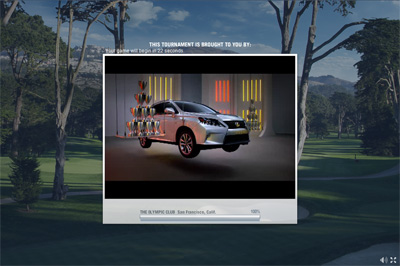- About
- Subscribe Now
- New York,
July 11, 2012

A 12.1 percent global increase in Internet ad spend year over year during the first quarter was advertisers’ tactic to reconnect with consumers who are becoming more confident, according to a study by Nielsen Co.
The Global AdView Pulse report also found that total ad spend increased 3.1 percent globally year over year in the first quarter. Interestingly, the report found that the only ad channel with a decrease in ad spend was print magazines, while different regions proved to have their own preferences that luxury advertisers can try to reach a target audience.
“The truth is, the Internet will continue to earn a larger percent of luxury marketers’ dollars because it is the most effective,” said Chris Ramey, president of Affluent Insights, Miami. “Considering some 80 percent of all affluent consumers go to the Internet before they decide to go to a showroom, that makes the medium an imperative.
"Luxury marketers intuitively understand that the best prospects are online investigating their purchases before they choose to invest time in a showroom," he said. "We are still in a period ‘thoughtful consumption.’
"Consequently, there is no reason to expect less than double digit growth for the Internet in the foreseeable future in North America or Europe and this fact also serves to remind us that if the best prospects do not find a brand online, then it does not exist."
Mr. Ramey is not affiliated with Nielsen, but agreed to comment as an industry expert.
Nielsen declined comment.
Where have all the ads gone
All areas with the exception of print magazines saw an increase in ad spend year over year during the first quarter. Media studied include television, newspaper, radio, outdoor, Internet and cinema.
Print magazines saw a minor decline compared to the first quarter of last year, while newspaper ad spend rose 3.1 percent.
Though Internet ad spend had the largest increase, TV attracted the majority of advertising dollars. This was probably due to the high price put on TV ads because they reach the largest audience.
The luxury industry as a whole rarely turns to TV ads, with the exception of some luxury automakers that choose to show performance and technology to a broad audience.
Additionally, the 12.1 percent increase in Internet ad spend year over year shows that all consumers including the affluent are absorbing more information online than last year at this time.
A few regions in the study had a notable growth in online ad spend including Europe, Latin America and the Middle East and Africa with increases of 12.1 percent, 31.8 percent and 35.2 percent, respectively.
Recently, luxury marketers Aston Martin and Lexus saw great success from Internet-based campaigns.
Though these campaigns did not only include online advertising, it further proves that luxury brand campaigns that are based on the Internet have a far reach that can be tracked.
British automaker Aston Martin chose digital to market its new Vanquish model and saw a more than 100 percent increase in visitors to its Web site from social media channels among users in Germany, the United States and its home country.
The automaker also saw the highest traffic on its Web site ever recorded during the first three days of the campaign (see story).
Aston Martin Vanquish
In addition, Lexus’ online campaign for the U.S. Open tournament that included digital advertisements and a virtual golf game was expected to see more than 100 million impressions and 100 million social media ad impressions, according to the game organizers.
The U.S. Open’s Web site featured interactive ads from the brand and a free golf game called Virtual U.S. Open that looked like the course where the tournament took place. Lexus took this opportunity to push the RX F Sport via these efforts (see story).

Lexus ad before the game starts
Mismatched markets
The report also found that there are key differences in each region studied in terms of each medium and how it has evolved.
For TV ads, there was a 33.8 percent increase in ad spend in the Middle East and Africa.
Also, dollars spent on TV ads rose 4 percent in North America, which made this channel second only to outdoor advertising in the region.
Nielsen studied magazines and newspapers in the print category. Both channels saw an increase in ad spend in Latin America and Asia-Pacific.
Meanwhile, magazine ad spend rose 7.6 percent and 3.6 percent in Latin America and Asia-Pacific, respectively, while newspaper ad spend grew 10.3 percent and 5.4 percent.
North America saw nominal declines in print ad spend, per the report.
Radio ad spend increased in every region studied, but increased most in emerging markets Latin America and Middle East and Africa by 18 percent and 21.1 percent, respectively.
There was a decline in cinema ad spend during the first quarter of this year in Latin America and the Middle East and Africa, but this was offset by an increase in Asia-Pacific of 27.1 percent.
Lastly, outdoor ad spend increased 6.4 percent globally year over year during the first quarter. This includes increases of 4.4 percent in North America, 45.3 percent in the Middle East and Africa and 21.1 percent in Asia Pacific.
Meanwhile, Europe was the only region to experience a decline in this channel, which was 1.2 percent.
“The report is consistent and illustrates the emerging technologies in each continent,” Mr. Ramey said. "Although we study the world, this report illustrates that each market is different and unique.
"However, luxury marketers should be cautious in relating continents contextually,” he said. “Some markets are emerging while others are mature.
“Regarding print, it has historically been the marketing platform for most luxury brands, but now the Internet is most pervasive, and consequently more effective and often transactional.”
Final Take
Tricia Carr, editorial assistant on Luxury Daily, New York
Share your thoughts. Click here